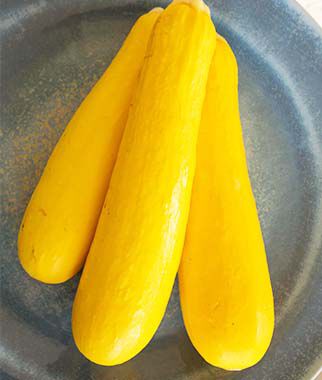50 to 55 days from direct-sowing.
One bite of this scrumptious zucchini will convince you that you have a new favorite. And if you live in a hot-summer climate, all the better -- Partenon is specially adapted to produce well in high-heat temperatures where others flounder. Big yields, tender-sweet fruit, open plant habit for easy harvest . . . what's not to love about Partenon?!
Partenon takes its name from its nature: it is a parthenocarpic, or self-pollinating, variety, much like a seedless watermelon. It has very few seeds, and what it does have are soft and small. But the real differences are its ability to grow under adverse conditions, its resistance to cucumber beetles (a big pest for other zucchini varieties), and its longer freshness after harvest.
First, the vigor and determination to bloom and fruit in high heat and other stressful growing conditions. Many zukes simply won't pollinate once the temperature climbs above 90 degrees F, and if you live in an area where that can happen even in late spring, let alone summer, your squash crop can really suffer. Partenon avoids the whole problem and sets reliably every time, with each 18-inch-high, 36-inch-wide plant setting about half a dozen fruit.
Second, the resistance to cucumber beetles. This is just a side benefit of Partenon's bitterfree fruit. The chemical that causes that bitterness also attracts cucumber beetles. So by having less of the chemical, Partenon not only bears sweeter fruit, it keeps the pests away!
Third, the extended "shelf life" of these zucchinis. Again, it's all science. Partenon has much lower levels of ethylene, the chemical that speeds ripening (and over-ripening!). So if you pick it on schedule, you'll find that it keeps its texture and flavor longer than other varieties from your garden. Pretty cool!
Partenon is a quick grower, setting long, slender fruit that will simply keep going if you don't pick them at 8 or 9 inches. Dark green and packed with nutrition, they are a pleasure to eat. Give this exciting newcomer a try this season!
Sow seeds 1 inch deep directly into the garden after the danger of frost is past. (The rule of thumb is 2 seeds per hole.) Thin the seedlings to 24 inches apart, or plant 4 to 5 seeds together in hills 4 feet apart and then thin to 2 plants per hill. For even earlier harvests, start seeds indoors and transplant into the garden as soon as the soil warms in spring.




















































